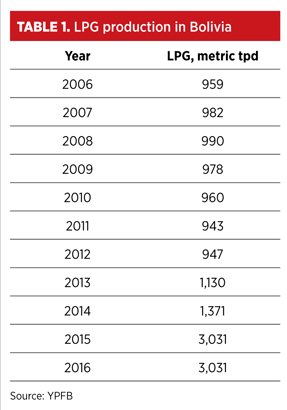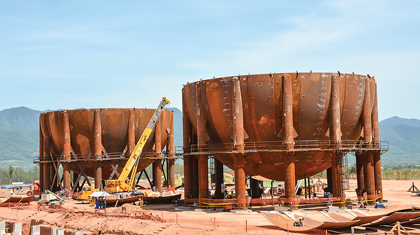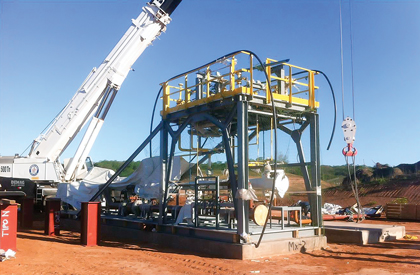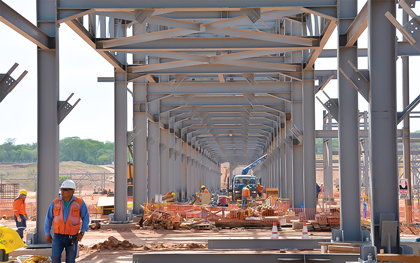Regional perspective: South America
M. Nogarin, Contributing Writer
The construction of the liquid separation plant at Gran Chaco opens a new chapter in the history of the petroleum business in Bolivia. For the first time, the South American country will become self-sufficient in liquid hydrocarbons, mainly LPG, therefore guaranteeing its energy security for the future.
At the same time, it is a major step in the energy supply integration of the region’s Southern Cone, since the excess production will be exported to neighboring countries—Argentina, Paraguay, Peru, Brazil and, potentially, others.
Project outline. The turnkey contract for the Gran Chaco gas separation and liquefaction plant, which includes engineering, materials, construction and startup, has an estimated cost of $592 million (MM). The cost of operating the plant will be approximately $13 MM, which brings total investment to $605 MM, to be amortized over a period of 15 years.
The cost of building the facility will be financed in its entirety by Banco Central de Bolivia (BCB) and state-owned oil company Yacimientos Petrolíferos Fiscales Bolivianos (YPFB). The Gran Chaco plant is expected to generate an annual income of $1 billion/year, which will bring a substantial socioeconomic benefit to Bolivia.
The new gas separation and liquefaction plant will be located in the town of Yacuiba, on the border with Argentina, in the state of Tarija. The liquid separation plant will process 32.2 million cubic meters per day (MMcmd) of natural gas, yielding 2,144 metric tons per day (metric tpd) of ethane, 2,247 metric tpd of LPG, 1,658 bpd of isopentane and 1,044 bpd of gasoline.
The aim of the Gran Chaco plant is to recover the excess energy being exported in natural gas sold to Argentina (68 Btu/scf), with a present energy value of 1,068 Btu/scf, which will allow for additional production of LPG that can be exported to other markets. This strategy will generate income for the Bolivian state, as well as create raw materials, such as ethane, for the manufacture of plastics.
The enriched gas produced from the mega-fields of Sabalo, San Alberto and Margarita contains methane, ethane, propane and butane. This resource can be processed at the Gran Chaco facility on the border, before being transferred to the Juana Azurduy Gasoducto de Integración (GIJA—the Juana Azurduy natural gas pipeline), which presently transports 13.5 MMcmd of gas to Argentina.
The modern installations of the Gran Chaco facility cover an area of 74.5 hectares. The new facility is being built by Spanish engineering firm Técnicas Reunidas SA, while the management and operation will be undertaken by Tecna Bolivia SA. The equipment will be provided by German firm Siemens Energy.
Engineering and construction. Work on the Gran Chaco plant began on January 11, 2012, and is expected to be completed by October 2014. According to the last progress inspection of the liquid separation facility, which took place in mid-December 2013, the project is 67.49% completed. Engineering is 98.82% completed, procurement is 88.09% completed, and construction is 31.07% completed. These percentages include the integration and completion of onsite work and the manufacturing of equipment overseas.

The engineering contractor is conducting the final revision of the equipment installation and the layout of electric cables. As far as procurement is concerned, most of the equipment is in transit. The processing columns are already in Argentina and will next be moved to the border.
The construction phase has already seen the land cleared, the foundations poured, the temporary onsite offices built and the water wells drilled. For the mechanical installation, the pipes have been laid and electrical lines have been installed up to a height of 30 m. The project’s contractors have built 1,542 tons of the completed structure’s 3,200 tons.
Presently under construction are the lattice work for the cryogenic unit, piping, access roads to the highway, storage facilities, stores and workshops. So far, three spheres (Fig. 1) have been installed, two for LPG and one for isopentane, which is 1,814 tons of the total 4,302 tons planned.
 |
|
Fig. 1. Two of the three spheres installed for the main metal structure of the Gran Chaco plant’s LPG and isopentane facilities. Photo courtesy of Técnicas Reunidas. |
Siemens Energy is providing the turbocompressors and turbogenerators for the plant under the turnkey contract, at a total cost of $93.4 MM. The four residual gas turbocompressors and three turbogenerators will provide the energy needed to operate the Gran Chaco plant. This equipment is necessary to optimize the construction timetable and to contribute substantial savings to the project, estimated at approximately $30 MM.
The equipment consists of a K-201 A/B/C/D turbine, an X-201 A/B/C/D residual gas compressor, E-502 A/B/C/D hot oil heaters, tools, spare parts and auxiliary systems. The turbogenerators include a K-601 A/B/C turbine, a G-601 A/B/C electric generator, an E-501 regenerated gas heater, tools, spare parts and auxiliary systems.
Modular assembly. Part of the plant has been predesigned and built in modules (Fig. 2) outside of the country, and then shipped to Bolivia. There, the 15 modules will be assembled. These modules comprise a total weight of 2,000 metric tons, which will be integrated into the onsite installation and significantly reduce construction time.
 |
|
Fig. 2. Onsite assembly of modules for the Gran Chaco plant. Photo courtesy of |
The mechanical assembly of the plant will include building 4,500 metric tons of metal structure (Fig. 3), installing 5,500 metric tons of tubing, welding 275,000 inches (in.) and assembling 10,500 metric tons of equipment. This assembly includes construction of the 24-m-diameter, 275-psig spheres, as well as tanks, modules and other equipment.
 |
|
Fig. 3. Installation of the metal structure for the Gran Chaco plant. Photo courtesy of |
Five million worker hours will be expended to build the project, requiring an average of 1,700 construction workers per month. The schematics of the Gran Chaco plant include several elements:
- Gas entry
- Gas filtration and dehydration
- Cryogenic units
- Separation unit
- Residual gas compression unit
- Storage and evacuation of liquids
- Electrical generation.
Flexible operational model. As previously mentioned, the objective of the Gran Chaco plant is to process the gas stream that is transported by the GIJA pipeline from the production mega-fields to the border with Argentina. This gas can be separated into components: ethane, LPG, isopentane and stabilized gasoline.
The bid process for the project specified an operating system that would enable the recovery or rejection of ethane. Técnicas Reunidas engineers selected a recycle split vapor (RSV) process licensed by Ortloff Engineers, which is based on a main cryogenic section that allows high recovery of ethane. The RSV process also permits flexibility in operational modes. Ethane can either be rejected or recovered; high-efficiency propane recovery is possible by rejecting ethane (+99%); and a high level of propane recovery can be maintained at different levels of ethane production.
The cryogenic unit is made up of two turboexpander trains that operate in parallel, where the heavier components are liquefied and later separated from the gas stream in each of the 430-ton demethanizing towers (Fig. 4). This produces a residual gas stream that is compressed and reinjected into the GIJA gas pipeline for export to Argentina.
 |
|
Fig. 4. Demethanizing tower during transport in Yacuiba, on the border with Argentina. |
The extracted liquids pass to the separators. The ethane extracted from the gas current is liquefied when the plant is operating in ethane-recovery mode, or it stays in the residual gas current when the plant is operating in an ethane-rejection mode. The LPG and isopentane obtained in the separator are stored in the spherical storage units, while the gasoline is stored in floating roof storage tanks. The products are then offloaded from the tanks to trucks at the loading docks, and the trucks carry them to their destination of use. GP




Comments